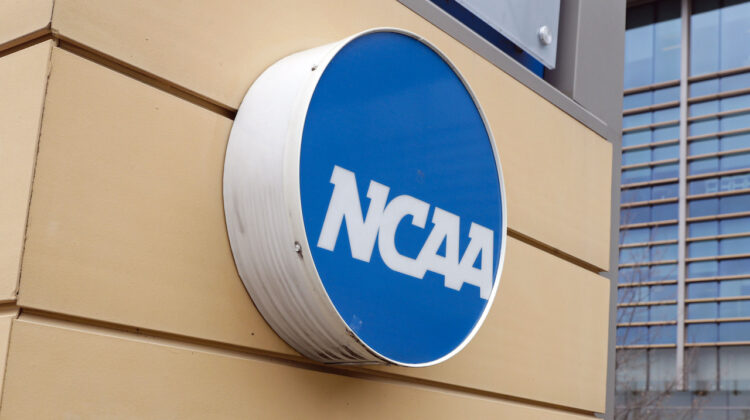Chuck Neinas has been involved in college sports so long that he served as the commissioner of the Big Eight in the 1970s and commissioner of the Big 12 in the 2010s. He lives in Boulder, runs a consulting service and closely monitors the relentless flow of news.
Neinas zoomed past 90 a few years ago. But his mind remains sharp and his passion deep, especially when the topic turns to his legal battle with the NCAA.
The legal battle with the NCAA.
The case that changed everything.
Neinas’ most important contribution to college sports came not as conference commissioner but as executive director of something called the College Football Association, or CFA, a now-defunct organization that lobbied on behalf of heavyweight football schools.
In that capacity, Neinas spearheaded a lawsuit against the NCAA that went to the Supreme Court — and celebrates a notable anniversary on Thursday.
NCAA v. Board of Regents of the University of Oklahoma is turning 40, as relevant now as it was on decision day, June 27, 1984.
“That took up two or three years of my life,” Neinas said with a laugh. “Did you know that case is cited at universities when they teach antitrust law, as an example of Rule of Reason.”
While rarely cited in the college sports space, NCAA v. Oklahoma regents created the modern landscape.
With John Paul Stevens writing for the majority, the Supreme Court determined the NCAA did not control television contracts — that media rights were the property of the universities, which could negotiate deals directly with the networks.
All the major realignment moves since then, from Penn State joining the Big Ten in 1990 to the destruction of the Pac-12 last summer, can be traced to that case.
To Neinas and the CFA.
“The NCAA was trying to be all things to all people,” he said. “It was trying to treat Colorado College the same as Colorado and Wabash the same as Notre Dame. It was ridiculous. The big schools were not well represented. They were the minority.”
Sound familiar?
So many of the issues underlying the current chaos are rooted in the same flawed governance structure (equal treatment for every school) that prompted the CFA to take the NCAA to court in the 1980s over media rights.
Back then, the NCAA negotiated the television contracts, controlled the number of national and regional broadcast appearances for each school and determined the distribution of revenue.
Neinas’ favorite example of the “ridiculous” situation: When No. 1 USC hosted No. 2 Oklahoma early in the 1981 season, the game was assigned a regional broadcast slot on ABC. The Trojans and Sooners received the same paycheck as unranked teams involved in regional broadcasts that day.
When the CFA attempted to negotiate a separate deal with NBC that would create 11 Saturday night games, the NCAA responded as only it can: by threatening to declare the CFA schools ineligible.
Not just the football teams — every sports team.
Outraged, the schools fought back with a property rights claim against the NCAA. Because the CFA didn’t have legal standing, Neinas said, it needed at least one university to serve as the plaintiff. The regents for both Oklahoma and Georgia filled the role.
The schools won in Oklahoma district court, so the NCAA appealed to the Tenth circuit.
The schools won again, so the NCAA appealed to the Supreme Court.
The school won again, resoundingly. By a 7-2 vote, the Supreme Court ruled the schools, not the NCAA, owned their media rights.
And with that, the modern era of major college football — with all its cash, chaos and contradictions — was born.
At first, the CFA handled the media rights negotiations for the conferences. Eventually, the schools eliminated the middleman and allowed their conference, through a grant of rights, to negotiate TV agreements that would grow to command hundreds of millions of dollars annually.
The networks’ stockpiles of cash became kindling for realignment, for the growth of the Big Ten and SEC, the transformation of the Big Eight into the Big 12, and the demise of the Pac-12.
That wasn’t the CFA’s intent, of course. The plaintiffs were opposed to the NCAA limiting the number of appearances and determining the size of the paychecks.
They were opposed to the NCAA’s restraint of trade.
“The case opened up college football,” Neinas said. “It was the greatest marketing tool ever for the sport.”
At the time, ESPN was five years old. Fox Sports did not exist. National champions were determined by the AP and UPI rankings.
Neinas couldn’t possibly have foreseen the role media rights would play in the sport’s evolution — how TV cash would lead to UCLA and Rutgers becoming members of the Big Ten.
“Heavens no,” he said, “I didn’t anticipate all the money that would be there. But the one thing TV can sell is sports.”
*** Send suggestions, comments and tips (confidentiality guaranteed) to pac12hotline@bayareanewsgroup.
*** Follow me on Twitter/X: @WilnerHotline
*** Pac-12 Hotline is not endorsed or sponsored by the Pac-12 Conference, and the views expressed herein do not necessarily reflect the views of the Conference.
Related posts:
 VIDEO – Thursday July 7th Jon Wilner and Brad chop it up on Pac-12 future
VIDEO – Thursday July 7th Jon Wilner and Brad chop it up on Pac-12 future
 Pac-12 survival guide: Five reasons San Diego State is the obvious expansion option
Pac-12 survival guide: Five reasons San Diego State is the obvious expansion option

FILE - BYU head coach Kalani Sitake . (AP Photo/Rick Bowmer, File)
Hotline heat check: Sitake, Sanders, Bray among the coaches under pressure as 2024 season begins Recruiting roundup: Assessing the top 2025 targets for the current and former Pac-12 schools
Recruiting roundup: Assessing the top 2025 targets for the current and former Pac-12 schools


